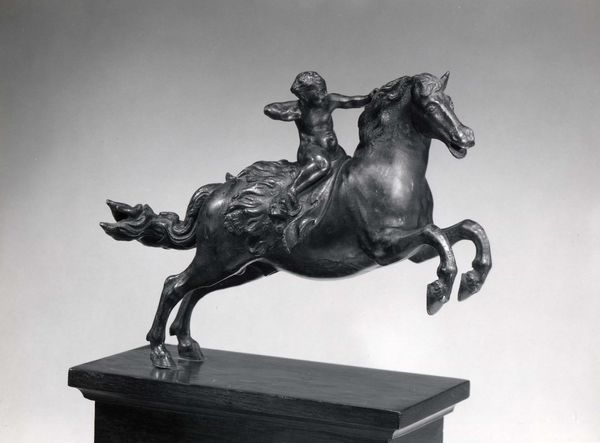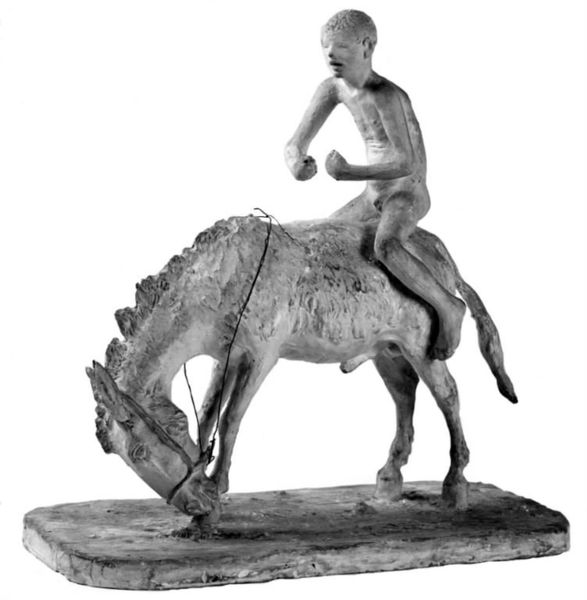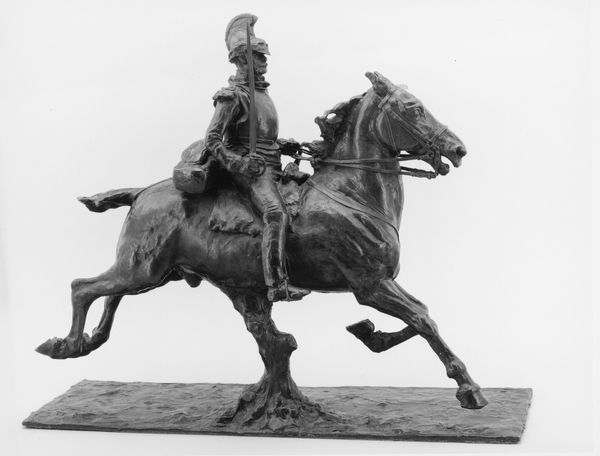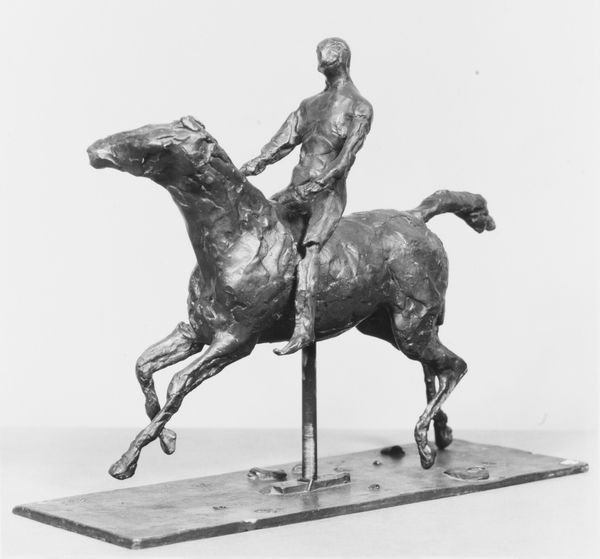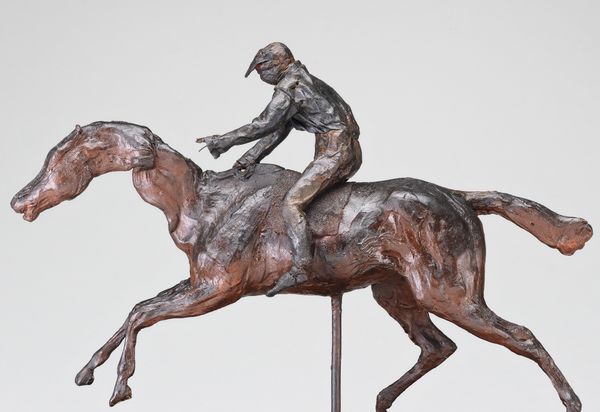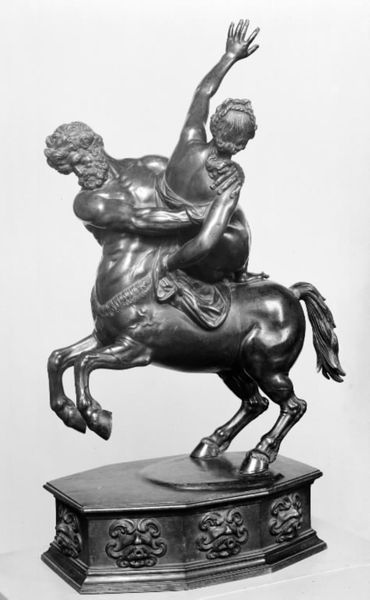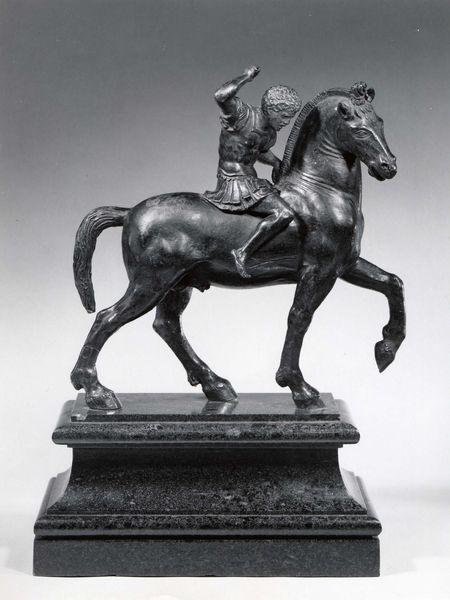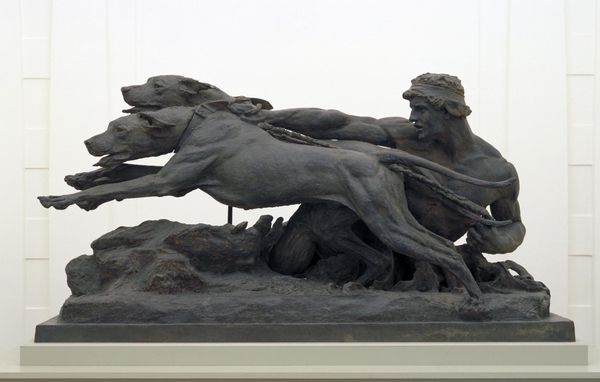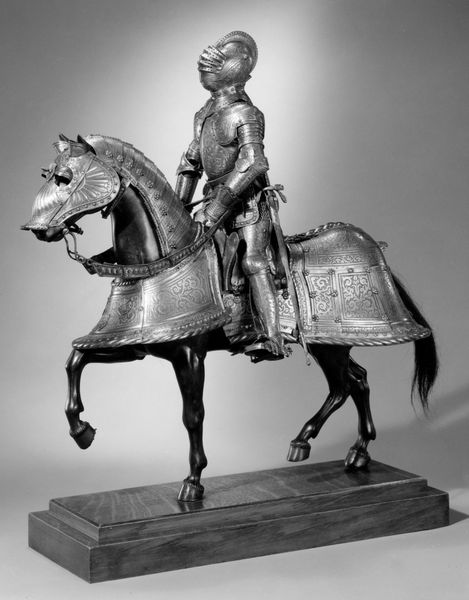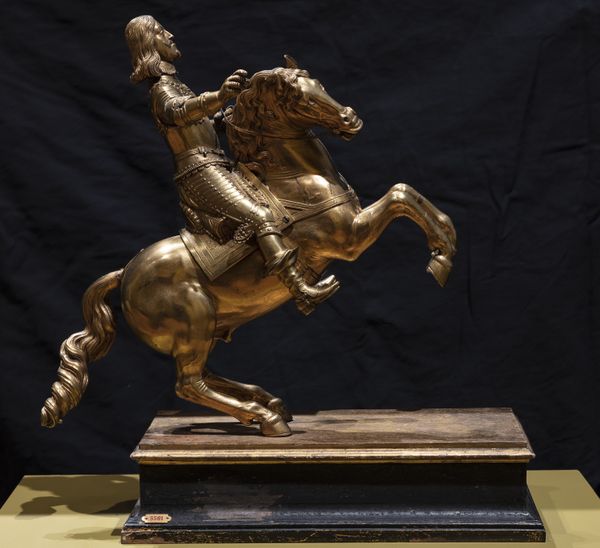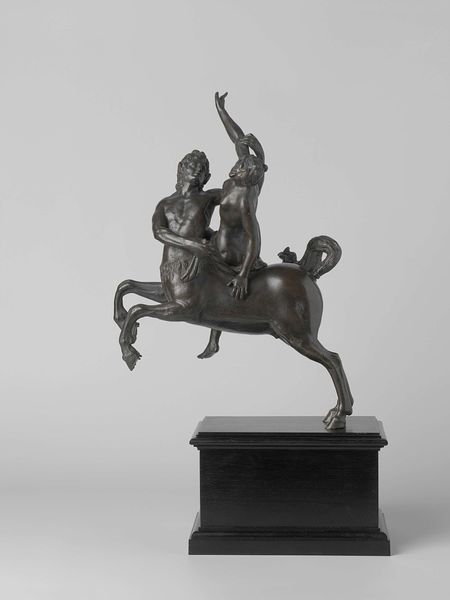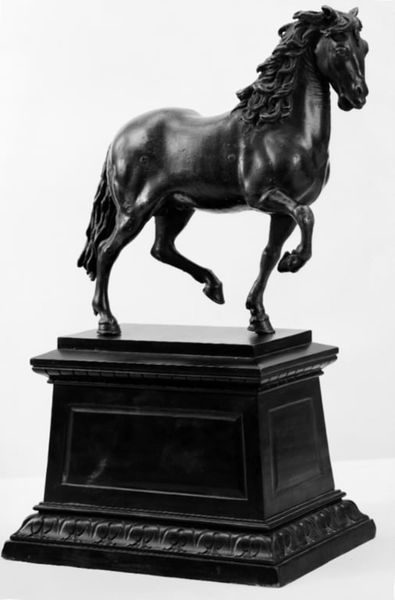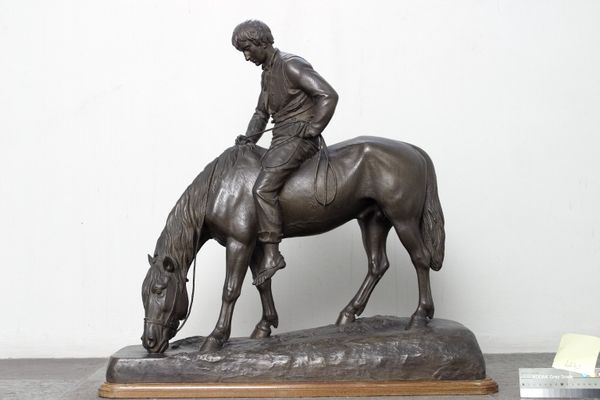
Dimensions: 48 cm (height) x 78.5 cm (width) (Netto)
Editor: This is "Karl rider to heste til vands" by Theodor Philipsen, created in 1894, and it's a bronze sculpture. I’m immediately struck by the dynamic tension; the rearing horses and the poised rider create a feeling of impending action. What stands out to you from a formalist perspective? Curator: Indeed, the kinetic energy is quite compelling. I’m particularly interested in the articulation of form. Observe the musculature of the horses – the artist uses light and shadow to accentuate their power. What about the texture of the bronze itself? Does it contribute to the overall effect? Editor: It definitely adds a tactile dimension. The roughness contrasts with the smoothness of the rider's figure, highlighting a certain vulnerability despite his pose of command. What can you tell me about the sculptor's process? Curator: Consider the base; its broad, stable form grounds the upward surge of the horses. This interplay of verticality and horizontality creates a balanced, yet dynamic, composition. Also, note how the light interacts with the curves of the horses’ manes; it guides the viewer’s eye through the sculpture. Editor: So, by examining the materials, form, and composition, we can start to understand the artistic intention beyond any narrative associations? Curator: Precisely. It’s the arrangement of these elements, their relationships, that construct meaning within the artwork itself, independent of historical context or the artist’s biography. Editor: I see! It’s fascinating how focusing on just the formal qualities can reveal so much about a piece. Thank you. Curator: A rewarding experience, indeed, and crucial for our appreciation of art.
Comments
No comments
Be the first to comment and join the conversation on the ultimate creative platform.
